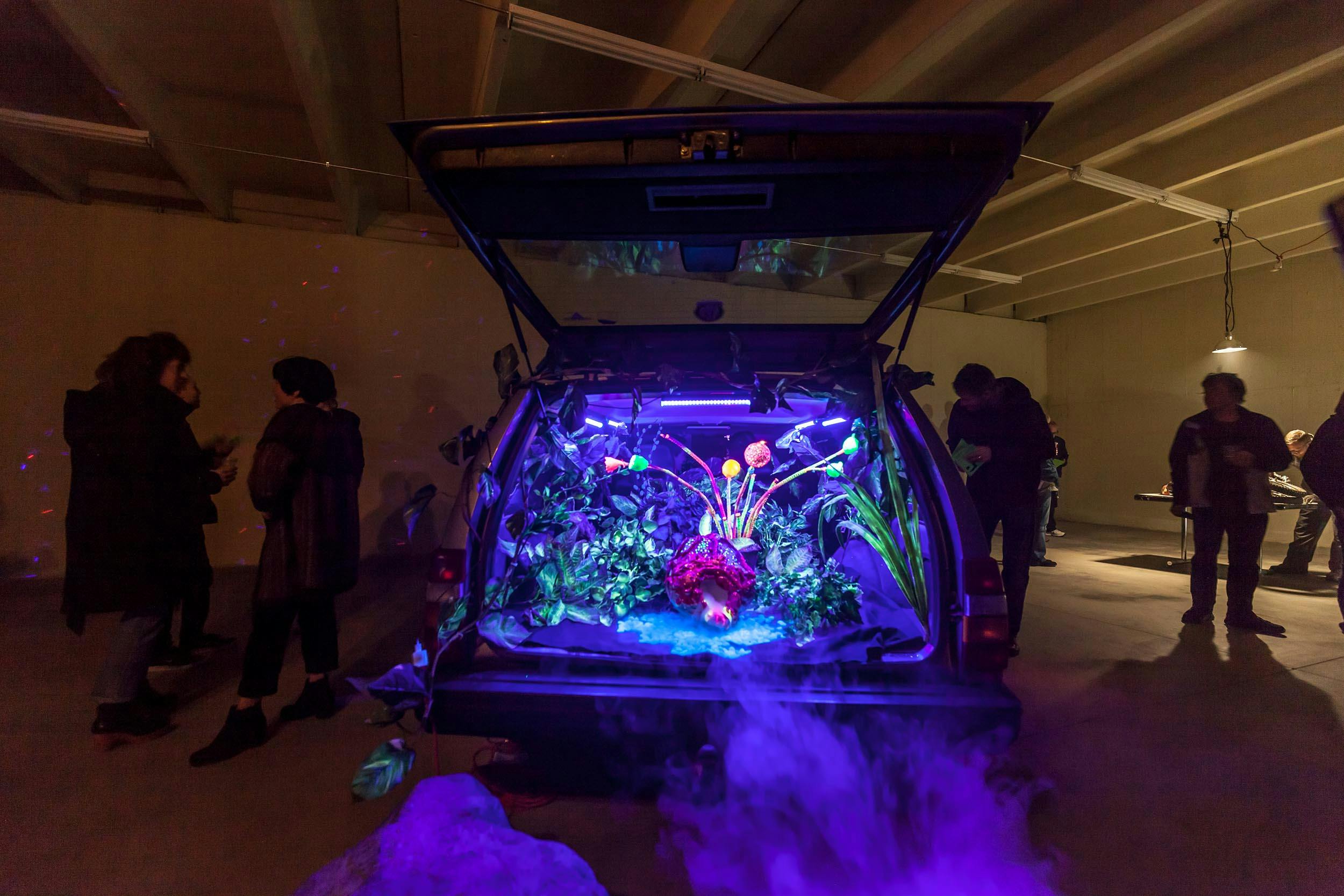Drive-In: Car Culture





December 16, 2017
Drive-In was a series of three experimental, one-night-only group exhibitions that employed vehicles as spaces for unconventional contemporary art. Each of the exhibitions included installations by Colorado-based artists who were invited to produce an artwork using their own, or borrowed, vehicles as a starting point for experimentation. The series explored our multifaceted relationships with automobiles beyond their function as modes of transportation.
Drive-In: Car Culture
Group Exhibition
For more than 130 years, vehicles have represented concepts of individuality and freedom, a symbol that has a striking similarity to the space artists’ hold in our minds. Yet times are changing, the automobile industry is affected by ecological challenges, atomization, an oil surplus, and lifestyle changes. Artists’ place within society is shifting as well. Given all of this, it’s a ripe moment for artists to help us reflect on our own relationship with vehicles—beyond the traditional symbol of American freedom.
Drive-In: Car Culture is the second in a series of one-night, experimental exhibitions that brings together 12 artworks that use artists’ own vehicles. Taking place in a two-story industrial warehouse, Drive-In: Car Culture features artworks that range from John McEnroe’s durational performance, which employs his SUV, to Stephanie Kantor’s absurd take on a traveling saleswoman. In contrast to the first Drive-In exhibition, which took place in a dirt construction lot, the indoor setting of Drive-In: Car Culture will feel closer to a car dealer's showroom.
The artworks in the exhibition expand on how artists relate to cars as not only a form of transportation, but also as an extension of identity, economy, and symbol of freedom. Drive-In: Car Culture offers a space to ponder the relationship cars have over our personal lives and communities, as well as our own attitudes around freedom, movement, and the open road.
This exhibition is made possible through the support of the Bonfils-Stanton Foundation.
